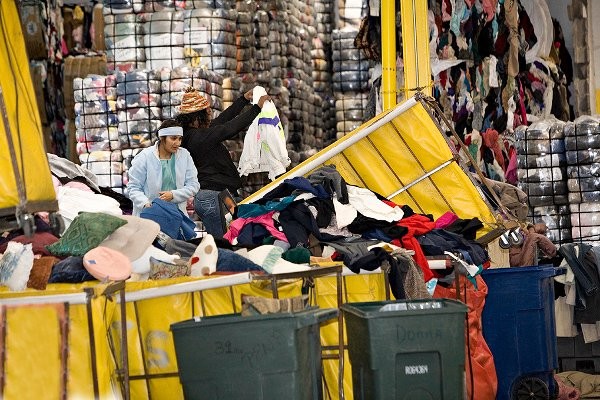EPA report says recycled clothing and textiles have significant impact on reducing greenhouse gasses

During this year's holiday season, the Secondary Materials and Recycled Textiles Association (SMART) encouraged the public to “donate, recycle, don’t throw away” their old clothing. The U.S. based organization says that too often, when holiday gifts of clothing, or new sheets and towels, are given older items are simply thrown away.
According to the United States Environmental Protection Agency, more than 13 million tons of solid municipal waste is generated annually that is exclusively clothing and other household textiles; of this amount 2 million tons, only 15.3%, is recycled.
“Unfortunately, clothing and textiles are not considered by the general public, to be recyclable products like plastic bottles, aluminum cans, and paper. Even though according to the EPA clothing and textile recycling has a greater impact on reducing greenhouse gas emissions than those other recyclables,” says SMART Executive Director, Jackie King. “SMART is working to make textile recycling as familiar to people as other regularly recycled items are today.”
In its 2011 study of Municipal Solid Waste, the U.S. EPA has calculated the impact the current level of recycling has Greenhouse Gases in the United States. The EPA report indicates the 2 million tons of textiles are currently recycled annually; is the equivalent of removing 1 million cars from America’s highways. This is more than 5-times the impact of recycled yard trimmings (170 thousand cars removed); is more than 4-times the impact of glass recycling (210 thousand cars removed); more than plastic recycling (640 thousand cars removed); and is nearly equal to the impact of aluminum recycling (1.3 million cars removed).
SMART estimates that 95% of all household textiles can be recycled or repurposed. The repurposing of textile products includes converting them into wiping cloths or remanufacturing them into products such as home insulation, carpet padding, or sound proofing material.
“Only 5 percent of all textile materials are ultimately disposed of as trash because they are either wet or are contaminated with oil, paint, or some other hazardous material,” says SMART President Lou Buty. “As long as the items are clean, even if they are stained or damaged, there is a recycling use for the material.”
Buty says industrial wiping cloths made from recycled textiles also have a significantly smaller carbon footprint than newly manufactured wiping clothes or laundered rags. Estimates are that more than five million pounds of untreated contaminates flow into the nation’s waterways annually from laundered wiping cloths. When manufacturing a new cotton shop towel an estimated 17 gallons of water and more than 66 BTU’s of energy are required during the entire process. Conversely, the creation of a wiping cloth from a recycled textile uses no water and virtually no energy.
In 2013 the EPA published new regulations governing the storage, handling, and disposal of solvent-soiled industrial wiping cloths. In its preamble to the regulation, the EPA explicitly encourages all states to implement the rule in its entirety as quickly as possible to enhance regulatory uniformity for businesses that use industrial wipes.
Secondary Materials and Recycled Textiles (SMART) is an international nonprofit trade association that strengthens the economic opportunities of its diverse membership by promoting the interdependence of our industry segments and providing a common forum for networking, education and trade. Since 1932, SMART has been at the forefront of recycling. SMART members use and convert recycled and secondary materials from used clothing, commercial laundries and non-woven, off spec material, new mill ends and paper from around the world. SMART member companies create thousands of jobs worldwide. SMART members prove each day that you can make money by being socially responsible.
The following link will take you directly to informational videos on textile recycling http://www.smartasn.org/about/videos.cfm.
To download the iRecycle app visit www.Earth911.com. The app allows users to find clothing and textile recycling drop-off locations in their area.
Company info
3465 Box Hill Corporate Center Drive, Suite H
Abingdon, MD
US, 21009
Website:
smartasn.org



